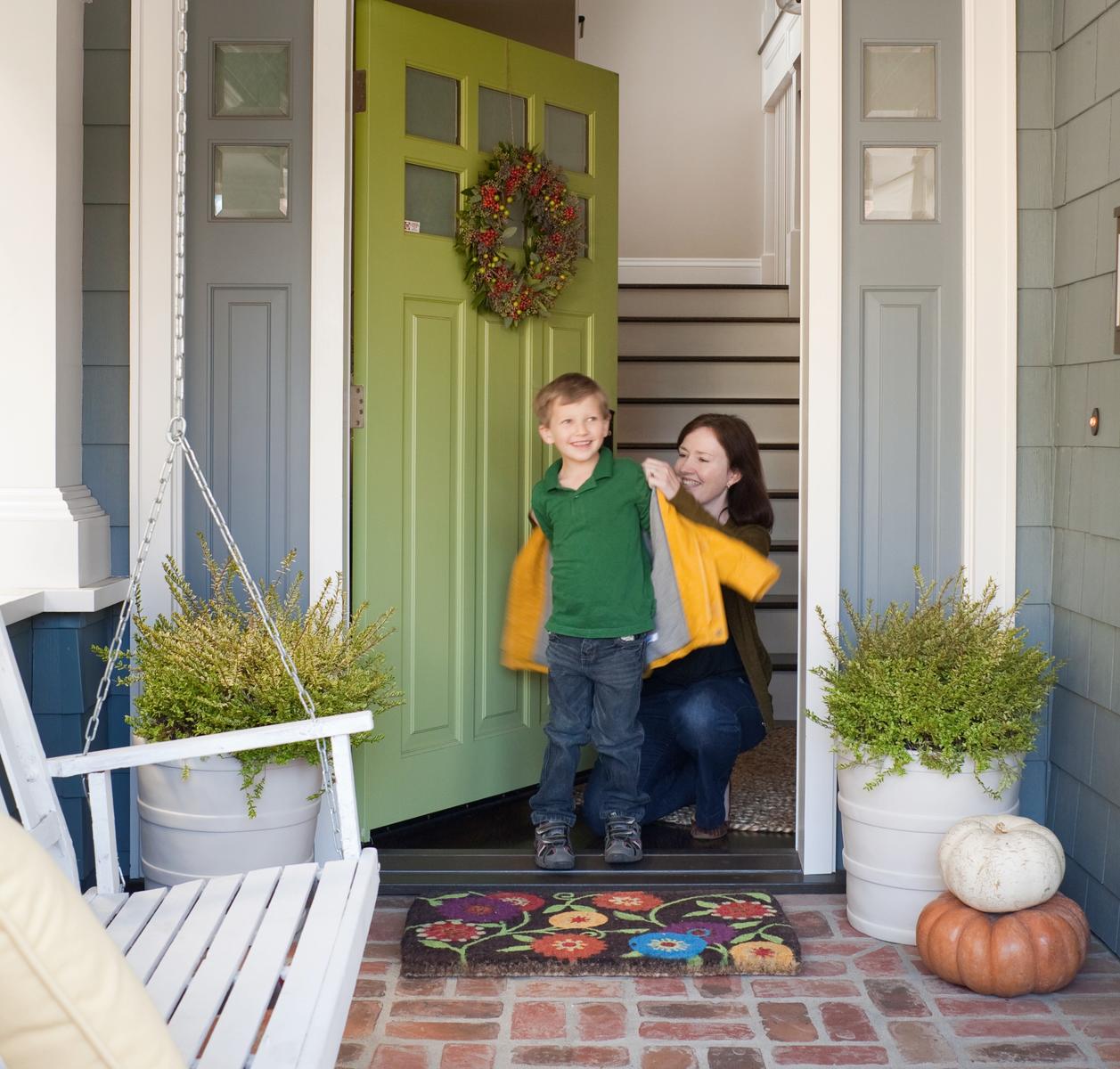
Ah, the great outdoors. The fresh air! The endless room to run around! The pollen, the sunburns, and the bugs! Playing around outside is literally all fun and games—until someone gets hurt. Whether you’re taking your kids to the park or just opening up the patio door to your backyard, there are a few things you need to do in order to ensure they have the safest (and most fun!) playtime possible.
1. Apply sunscreen before you head outside.
You already know about the importance of sunscreen and you don’t need us to tell you how crucial it is for your kids—and for you! What you may not realize, however, is that you need to put it on before you guys head outside. “Some sunscreens need 15 minutes to start working,” says Ingrid Polcari, M.D., a spokesperson for the Society for Pediatric Dermatology and an assistant professor of pediatric dermatology at the University of Minnesota. Be sure to check the label and also reapply as directed (usually every two hours or every 60 to 80 minutes if your child is swimming or sweating).
“If your child has sensitive skin, look for products that have zinc oxide or titanium dioxide as the only active ingredients,” Polcari says. She typically recommends these ingredients for infants and very young children as well, because these are mineral sunscreens and chemical free. What about spray sunscreens? “The FDA has expressed concern about kids inhaling spray sunscreens, so I typically recommend these only for older children and suggest avoid spraying near the face.” Ideally, you’ll want an SPF of 30 or higher.
2. Don’t forget the sunglasses.
Just like adults, kids should wear sunglasses when they’re outside. Any pair your kid will actually wear is good, as long as the lenses have UVA/UVB protection, says Tanya Altmann, M.D., a spokesperson for the American Academy of Pediatrics and author of Baby and Toddler Basics. Also: Is there anything cuter than a kid in fake Ray Bans? We don’t think so!
3. Hydrate, hydrate, hydrate!
The ideal water intake depends on all sorts of stuff (think: age, weight, gender, activity level, and more!). “A good rule of thumb is that kids should drink an 8-ounce glass of water for every year age they are up to 8 years (max 64 ounces),” says Dr. Altmann. If your kid isn’t big on water, “Try a fun cup or thermos and straw. And be a good role model yourself and show your kids that you are drinking water, too.” You can also add lemon wedges, cucumber slices, or strawberries to make the flavor a bit more fun.
4. Protect against allergies.
If your kid has seasonal allergies, it’s easy to wish you could lock them up in the AC all summer. Luckily, there are some more reasonable things you can do to help them instead. Dr. Altmann suggests putting your sneezy daughter in the shower or the bathtub as soon as she comes inside to wash off the pollen and not bring it into, say, her bedroom or playroom. “Nasal saline spray and possibly an over-the-counter nasal steroid spray or antihistamine, depending on the symptoms, could help, too,” she adds. Talk to your pediatrician to see if an allergy medicine—like Children’s Flonase Sensimist—is right for your child.
5. Have your kid dress the part.
When it’s super hot, your child might want to strip down to next to nothing, but do whatever you can to prevent that. “When possible, children should wear long-sleeved shirts and other protective clothing to guard against the sun,” says Deborah A.P. Hersman, president and CEO of the National Safety Council. Light-colored, loose-fitting clothing is best. Even better if you can find something with a tight weave or built-in SPF protection.
And skip the flip-flops. As easy as they are to get on your kid, they’re not great for outdoor play. “When being active, children should wear comfortable shoes that protect their feet,” adds Hersman. Something with complete coverage, like a sneaker, will shield little toes and provide better support as kids run around on pavement and uneven grass.
6. Protect kids against bugs.
Got lots of mosquitos and other pesky buggers in your neck of the woods? The National Safety Council recommends using an EPA-approved outdoor flying insect spray. “I prefer to put bug spray on clothing, like ends of pants instead of on skin, when possible,” says Dr. Altmann. “And always wash off when you come inside.” Another thing to do when you get indoors: a thorough check for ticks, as they’re typically the most active during the spring, summer, and fall.
7. Head inside during the middle of the day.
The sun’s rays are the strongest between the hours of 10 a.m. and 4 p.m., which means everyone is better off playing outside in the early morning or late afternoon, Hersman points out. Head inside during the hottest time of day to eat lunch, do some reading, and tackle a fun art project. Of course, pools are a great place to cool off—as long as there is parental supervision at all times!

